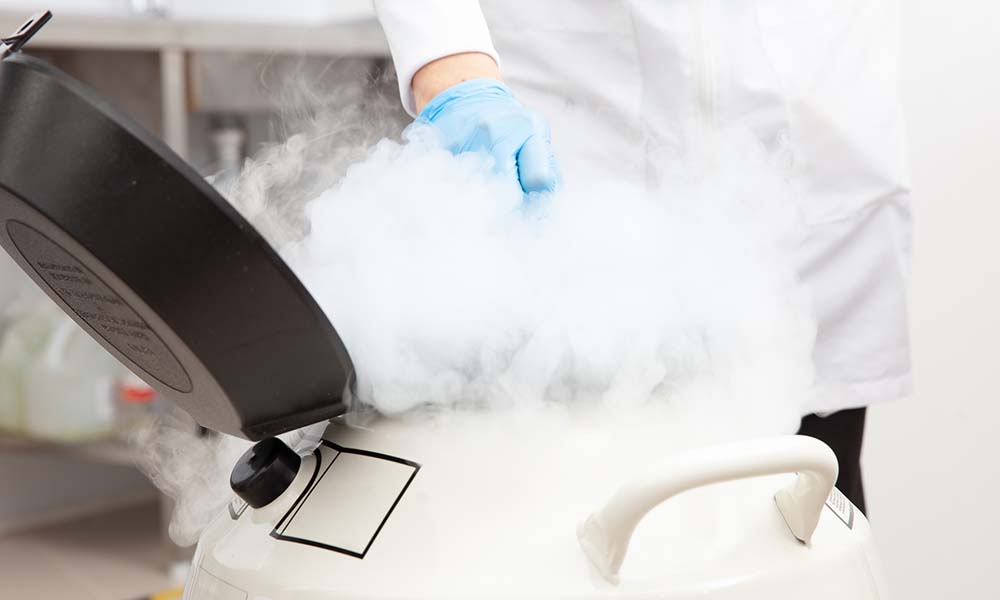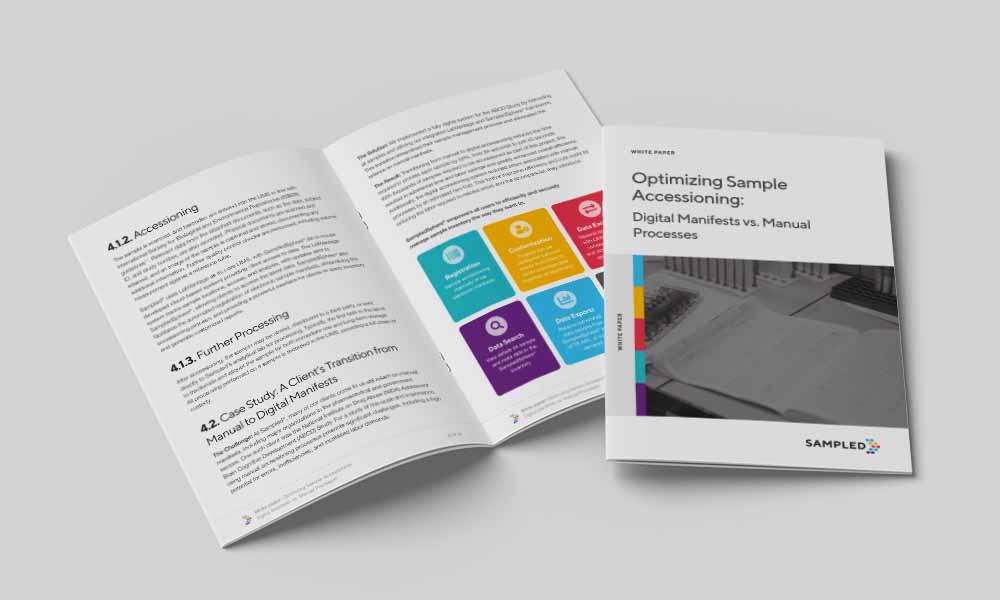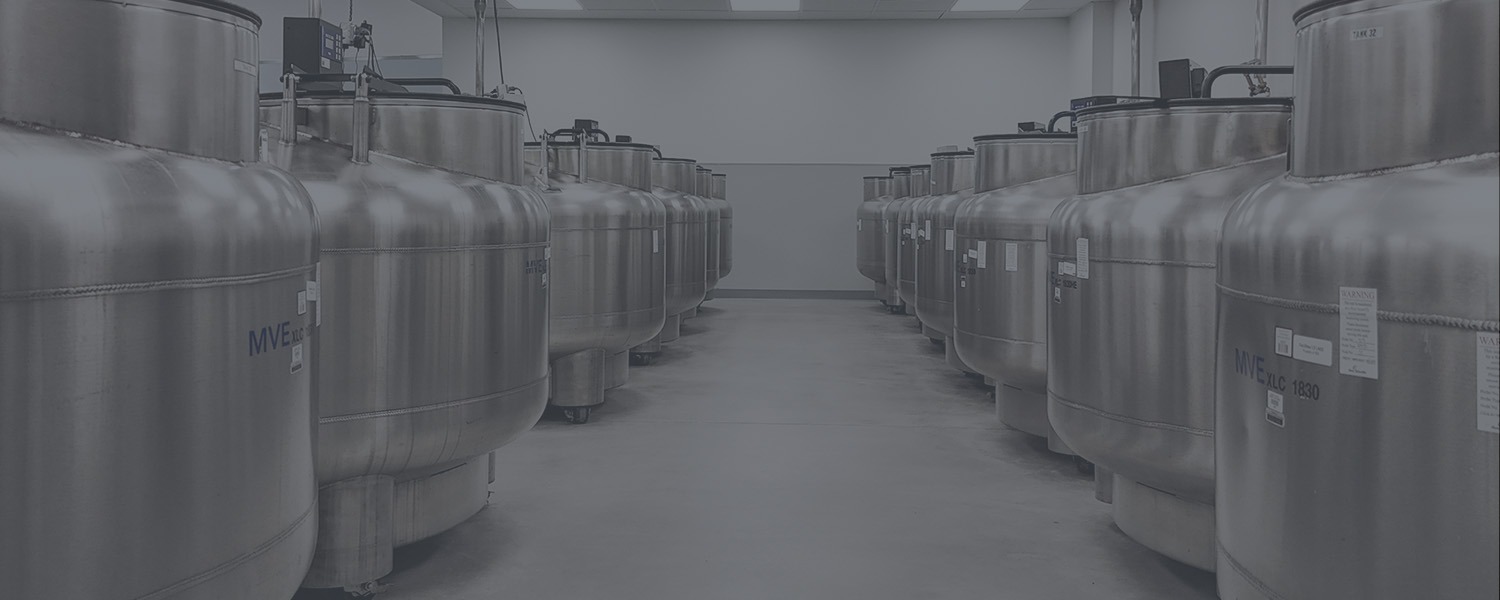The National Institute of Neurological Disorders and Stroke (NINDS) is an invaluable asset in advancing cellular research on neurological disorders.
By providing access to a diverse collection of high-quality patient-derived cell lines, NINDS facilitates breakthroughs in understanding diseases like Alzheimer’s and amyotrophic lateral sclerosis (ALS).
Partnering with SAMPLED for secure storage and efficient distribution, NINDS supports researchers worldwide in developing novel treatments and expanding knowledge in the field. This blog explores the impact of the NINDS Biorepository on cellular research and the crucial role of advanced biobanking practices, such as those implemented by SAMPLED, in preserving the integrity of these essential resources.
The National Institute of Neurological Disorders and Stroke
NINDS supports furthering our understanding of neurological disorders through education, funding, and its biorepository1. The NINDS biorepository maintains a diverse set of patient-derived cell lines, including induced pluripotent stem cells (iPSCs) and fibroblasts for many neurological disorders such as Alzheimer’s disease. By providing high-quality cell lines for research and clinical trials, NINDS enables researchers to derive crucial information about neurological disorders and promotes the generation of novel therapies and management strategies. NINDS relies on SAMPLED as a trusted partner to securely store and distribute cells.

Sample Storage Challenges in Modern Research
Research institutions face several challenges when storing samples and reagents. Small institutions can struggle with capacity and having sufficiently skilled staff to manage storage infrastructure and data security, while large institutions can struggle with adapting their existing infrastructure to evolving research environments. For instance, personalized medicine and the discovery of biomarkers for neurological diseases from diverse tissue types mean that more samples may need to be stored for individual patients2–4.
The high volume of samples necessitates more automated approaches to sample security. Manual monitoring becomes increasingly inefficient and unreliable as the volume of samples increases. Institutions like NINDS possess highly valuable cell lines sensitive to temperature fluctuations. Thus, they have an increased need for robust systems to ensure sample integrity. Beyond physical security, biorepositories require robust cybersecurity measures to safeguard patient data. In addition to protecting data, it is essential that samples and their related information are well-organized and readily accessible to authorized personnel.
Benefits of Advanced Biobanking
Advanced biobanking systems, such as those employed by SAMPLED in its partnership with NINDS, help to overcome many of these challenges, offering enhanced sample quality and security to bolster research efforts.
Scalability
Flexible storage capacity is essential for optimal biobanking and allows researchers to tackle more ambitious research projects incorporating more patient samples, treatments, and timepoints.
Security
Modern biobanks incorporate robust physical and data security systems to ensure patient data and samples are handled appropriately and are less vulnerable to theft or loss due to disasters. These systems include data encryption, dedicated alarm systems, real-time monitoring, and adherence to international regulatory standards such as the International Society for Biological and Environmental Repositories (ISBER)5 and the Health Insurance Portability and Accountability Act (HIPAA)6.
Automation
Modern biobanks use automation to streamline the retrieval and processing of different samples. This helps to eliminate the chances of human error, which can accelerate sample degradation and lead to sample misplacement.

The SAMPLED Framework
SAMPLED is the dedicated supplier for the NINDS Human Cell and Data Repository (NHCDR) and is trusted by other government institutions for sample storage and distribution. SAMPLED maintains a modern sample collection, storage and analysis infrastructure to help streamline the next generation of therapies for neurological disorders.
Automation
SAMPLED uses high-end automated instrumentation throughout its sample collection and storage pipeline. This helps ensure samples are stored at optimal temperatures, giving the best chances for high-quality data.
Security
SAMPLED uses dedicated alarm systems and real-time monitoring for each of its 600 mechanical -80°C freezers to ensure samples are always maintained appropriately. SampledSphere is our Title 21 CFR part 117 and HIPAA-compliant cloud-based portal where clients can view their data and receive reporting tailored to their needs.
Ordering NINDS Cell Lines
SAMPLED facilitates efficient ordering of cell lines from NINDS to drive the next generation of treatments for neurological disorders.
Visit this page for a detailed guide.
Conclusion
The NINDS Biorepository, bolstered by its partnership with SAMPLED, is transforming cellular research by providing researchers with secure, high-quality, patient-derived cell lines. This resource accelerates breakthroughs in understanding neurological disorders and developing novel therapies.
With advanced biobanking practices, including automated storage, robust data security, and scalable infrastructure, NINDS ensures the preservation and accessibility of critical research materials. As a result, the biorepository plays a pivotal role in advancing scientific knowledge and treatment possibilities for neurological diseases.
Do you need high-quality cell lines for your neurology research?
Download our comprehensive whitepaper, which covers the importance of NINDS and advanced biobanking practice in more detail.

References
1. The NINDS Human Cell and Data Repository – Providing iPSCs and Fibroblasts for the Study of Neurological Disease. March 1, 2021. Accessed October 29, 2024. https://nindsgenetics.org/
2. Zeng X, Chen Y, Sehrawat A, et al. Alzheimer blood biomarkers: practical guidelines for study design, sample collection, processing, biobanking, measurement and result reporting. Mol Neurodegener. 2024;19(1):40. doi:10.1186/s13024-024-00711-1
3. Jiao LL, Dong HL, Liu MM, et al. The potential roles of salivary biomarkers in neurodegenerative diseases. Neurobiology of Disease. 2024;193:106442. doi:10.1016/j.nbd.2024.106442
4. Król-Grzymała A, Sienkiewicz-Szłapka E, Fiedorowicz E, Rozmus D, Cieślińska A, Grzybowski A. Tear Biomarkers in Alzheimer’s and Parkinson’s Diseases, and Multiple Sclerosis: Implications for Diagnosis (Systematic Review). Int J Mol Sci. 2022;23(17):10123. doi:10.3390/ijms231710123
5. ISBER. Accessed October 30, 2024. https://isber.org
6. CDC. Health Insurance Portability and Accountability Act of 1996 (HIPAA). Public Health Law. September 10, 2024. Accessed October 30, 2024. https://www.cdc.gov/phlp/php/resources/health-insurance-portability-and-accountability-act-of-1996-hipaa.html
7. CFR – Code of Federal Regulations Title 21. Accessed October 30, 2024. https://www.accessdata.fda.gov/scripts/cdrh/cfdocs/cfcfr/CFRSearch.cfm?CFRPart=11

